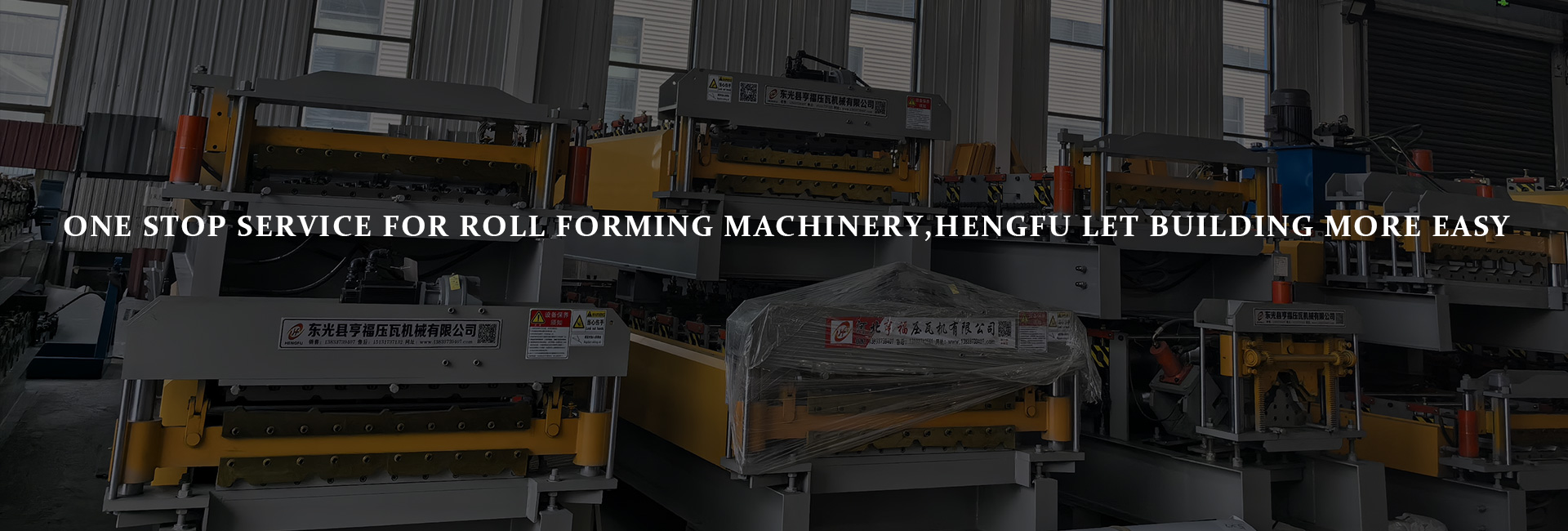Safety Checklist for Operating a Metal Roof Production Line
writer:优化 release time:2025-11-14 15:53:02 Views:105frequency
Safety as the Foundation of Every Metal Roof Production System
A Metal Roof production line is a highly coordinated manufacturing system, integrating coil feeding, roll forming, cutting, stacking, and final output. Because each unit operates simultaneously at high speed, even a minor oversight—such as an unbalanced roller or a misaligned cutter—can escalate into major production disruptions or safety accidents.
Whether the equipment comes from an experienced Manufacturer or is implemented in a high-volume Production facility, a structured safety checklist is vital. Adopting a consistent safety routine not only improves operational stability but also reduces the chances of machine damage and worker injury.


The following sections present a complete set of safety procedures that operators should follow to keep a Metal Roof production line running reliably.
1. Safety Measures Before Starting the Production Line
Before powering up the Metal Roof system, a detailed inspection ensures all components are functioning correctly.
1. Confirm Electrical and Safety Systems
·Verify the main power switch works properly.
·Test emergency stops for responsiveness.
·Ensure access doors and guards automatically activate interlock systems.
These basic checks ensure immediate shutdown capability if unexpected issues arise.
2. Examine Roll Forming Components
Rollers and shafts must be clean, smooth, and accurately aligned. Improper alignment can create:
·surface marks on Metal Roof sheets,
·uneven forming profiles,
·excessive vibration.
Even when rollers are crafted by a high-quality Manufacturer, routine inspection remains essential.
3. Check Lubrication Points
Proper lubrication minimizes overheating and reduces metal friction. Inspect:
·cutting units,
·bearings,
·chains,
·and transmission shafts.
A smooth-running lubrication system directly affects Production efficiency.
4. Ensure Safe Coil Loading
During coil handling:
·confirm the mandrel grips securely,
·avoid lifting coils manually,
·check the maximum weight limit.
Improper coil loading is a common cause of workplace injuries in Metal Roof manufacturing.
2. Essential Safety Guidelines During Operation
Once the Metal Roof production line is running, operator awareness becomes the key to preventing accidents.
1. Maintain a Clear Safety Zone
Operators must keep hands, clothing, and tools away from:
·rollers,
·straighteners,
·chain drives,
·and cutters.
Protective covers and guards must remain closed throughout operation.
2. Record Changes in Noise, Temperature, or Vibration
Unexpected increases usually indicate:
·worn bearings,
·loose fixtures,
·motor imbalance,
·or misaligned rollers.
Stopping the line immediately can prevent severe mechanical damage.
3. Avoid Manual Sheet Adjustments
Material jams often occur due to:
·incorrect coil tension,
·improper feeding angle,
·or blocked guides.
Sensors and limit switches should manage sheet flow—manual pulling increases the risk of injury.
4. Establish Consistent Communication
Operators and forklift drivers must coordinate coil changes, stacking, or adjustments using:
·indicator lights,
·hand signals,
·short-range radios.
Clear communication helps reduce mistakes and ensures smooth workflow.
3. Safety Steps After Completing Production
Proper shutdown protects both the machine and the Metal Roof products being manufactured.
1. Disconnect Electrical and Hydraulic Systems
·Turn off the primary power source.
·Release hydraulic pressure.
·Confirm all moving parts come to a complete stop.
2. Clean the Machinery Thoroughly
Remove:
·metal debris,
·dust buildup,
·excess oil.
Clean equipment reduces wear and prevents slipping hazards.
3. Check Blade Sharpness and Alignment
A sharp, well-aligned cutting blade ensures smooth Metal Roof panel edges. A dull blade produces:
·burrs,
·rough cuts,
·increased scrap rates.
4. Log Daily Operational Information
Document:
·running time,
·coil specifications,
·unusual behavior,
·maintenance recommendations.
These logs help both technicians and the Manufacturer diagnose potential long-term issues.
4. Frequent Errors to Avoid in Metal Roof Production Workshops
Error 1: Running Without Verifying Alignment
Misaligned rollers damage panel shape and reduce equipment lifespan.
Error 2: Ignoring Warning Signs
Vibration, noise, or burnt odors should trigger immediate inspection.
Error 3: Overloading the Decoiler
Pushing mandrels beyond their limit can cause mechanical failure.
Error 4: Poor Operator Training
Even well-built equipment from a strong Manufacturer requires skilled operators to prevent accidents.
Error 5: Skipping Cooling and Lubrication
Overheating motors lead to unstable Production output and shortened component lifespan.
5. Why a Safety Checklist Protects Your Metal Roof Production Investment
A strict safety program ensures:
·minimal downtime,
·stable product dimensions,
·fewer operating accidents,
·extended service life of the equipment,
·and consistently high-quality Metal Roof panels.
Even though equipment from a trusted Manufacturer offers reliable mechanical structure, daily checks are what keep the system operating smoothly. Using a comprehensive safety checklist transforms production reliability into long-term profit.
Conclusion
For any facility operating a Metal Roof production line, safety is not simply an optional measure—it is a core requirement for maintaining productivity and equipment health. By incorporating thorough pre-start inspections, practiced operational habits, and proper shutdown procedures, manufacturers can prevent costly errors and protect workers. With dependable equipment and disciplined Production routines, Metal Roof fabrication remains efficient, stable, and safe.
References
GB/T 7714:Groover M P. Automation, production systems, and computer-integrated manufacturing[M]. Pearson Education India, 2016.
MLA:Groover, Mikell P. Automation, production systems, and computer-integrated manufacturing. Pearson Education India, 2016.
APA:Groover, M. P. (2016). Automation, production systems, and computer-integrated manufacturing. Pearson Education India.







